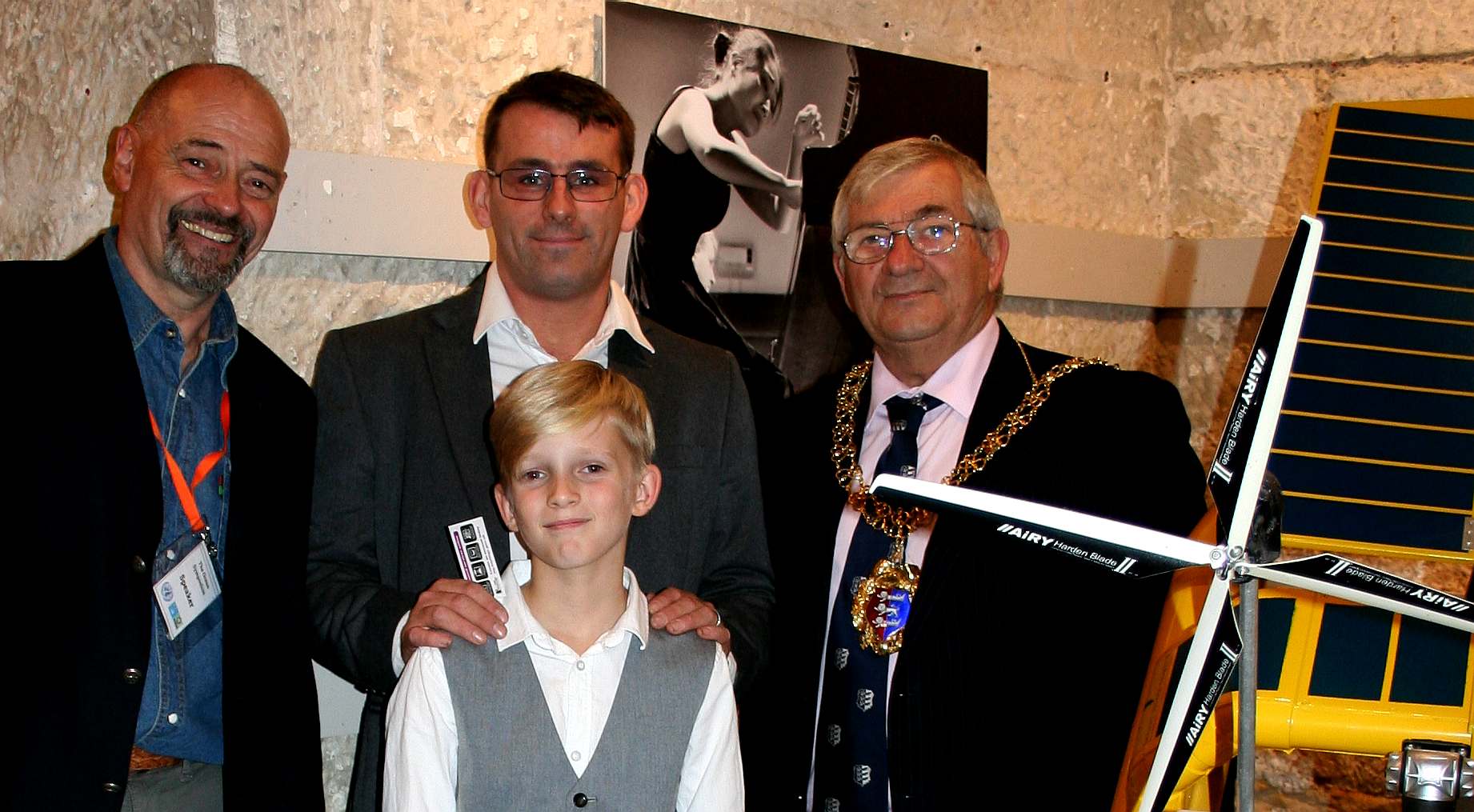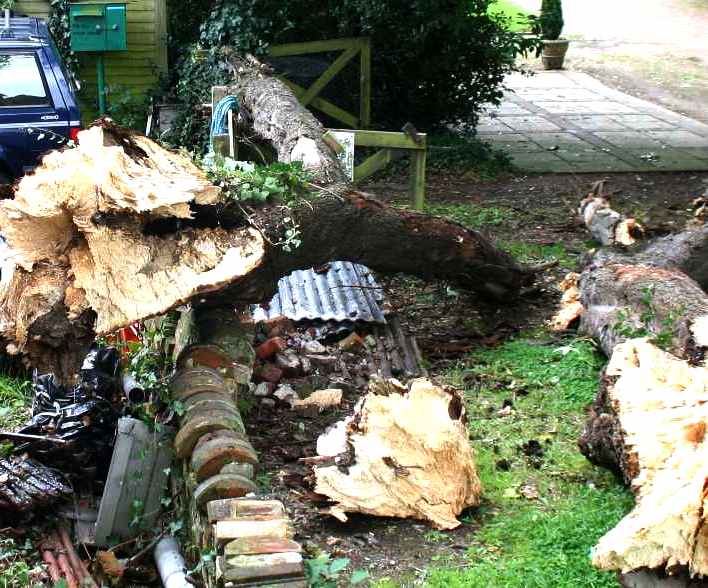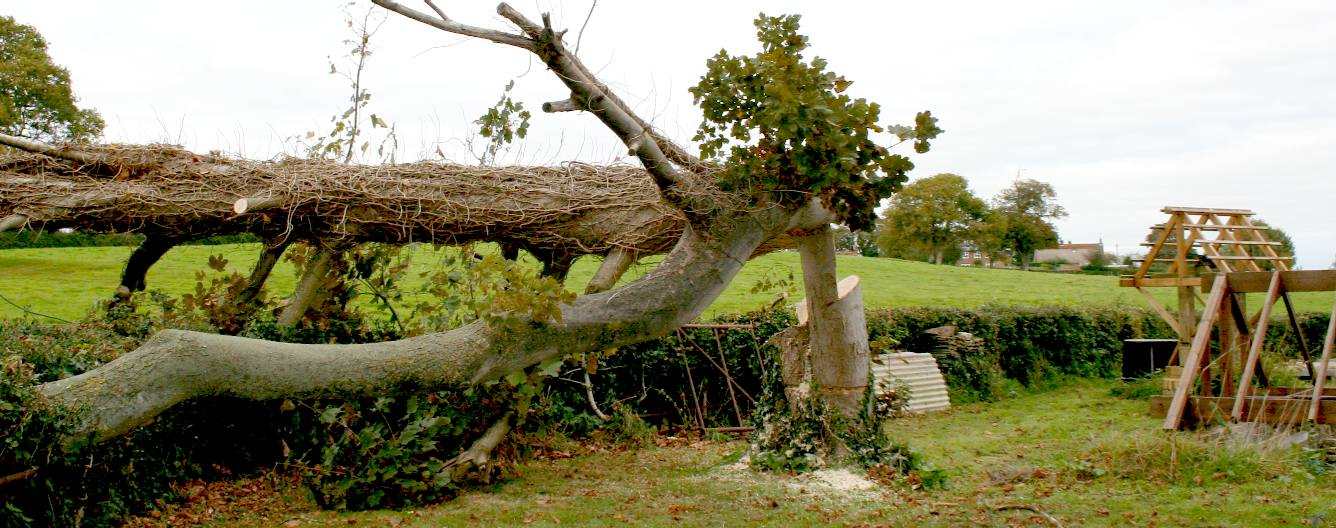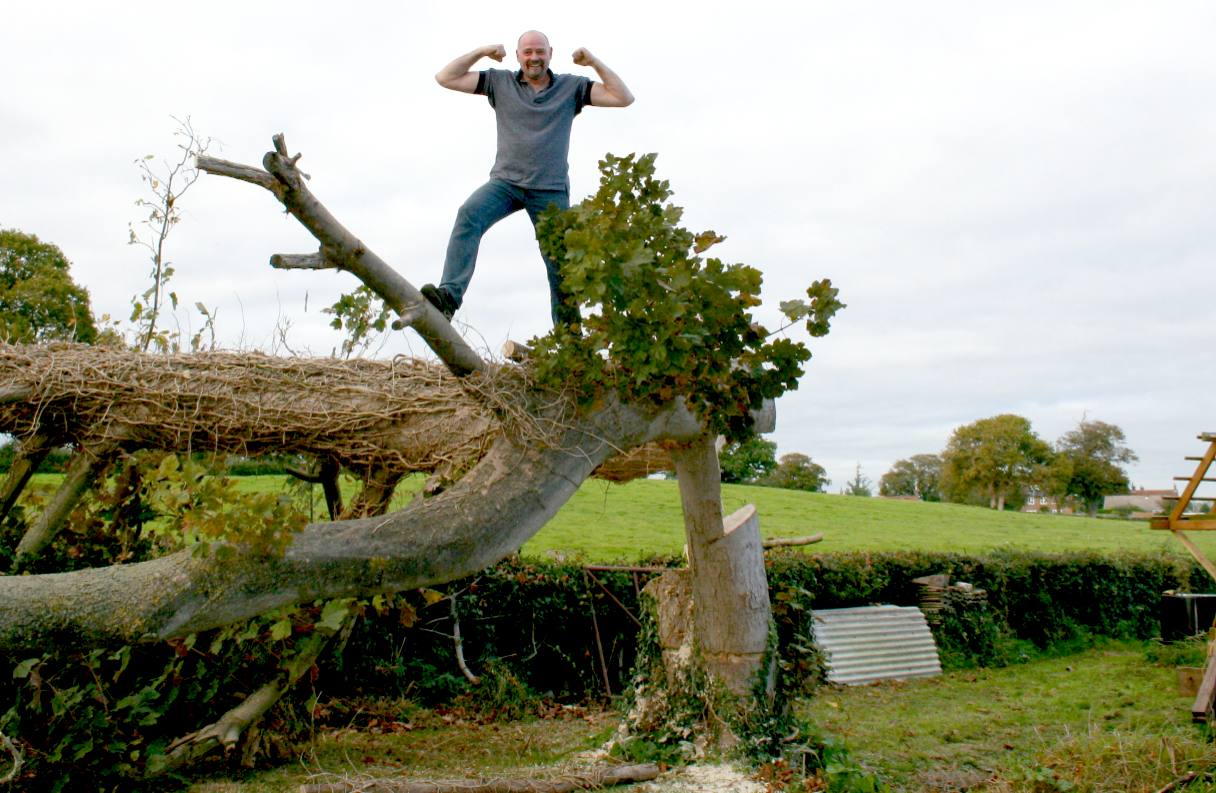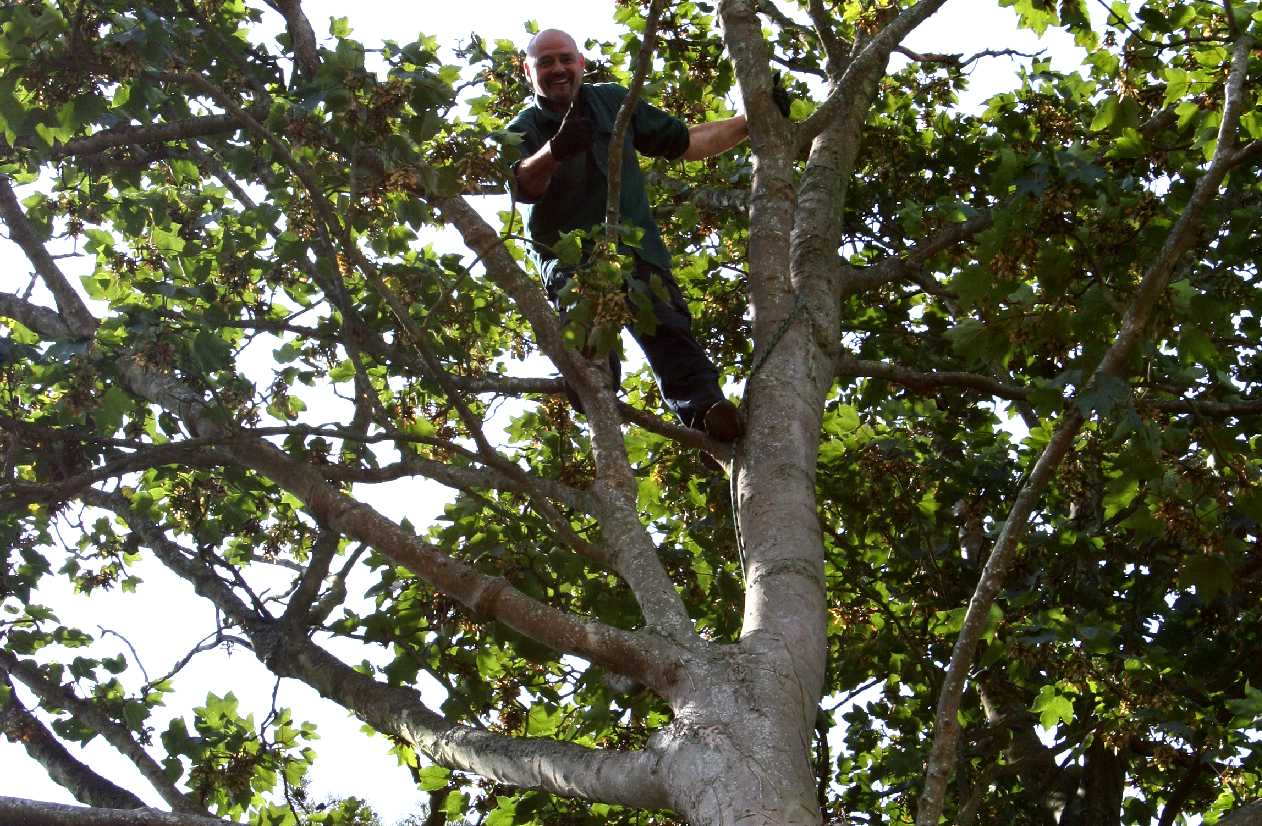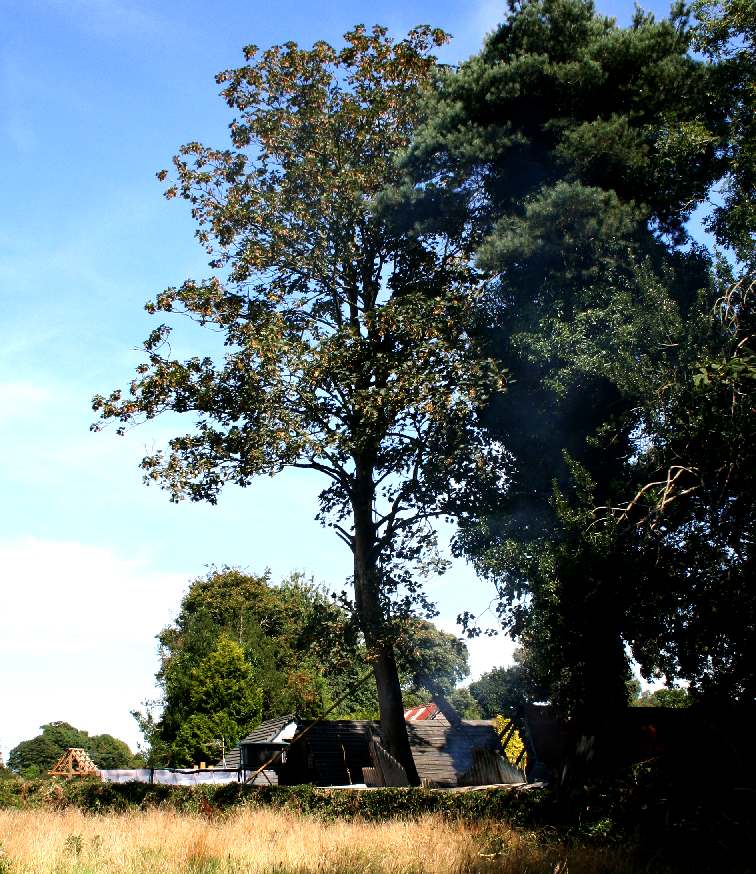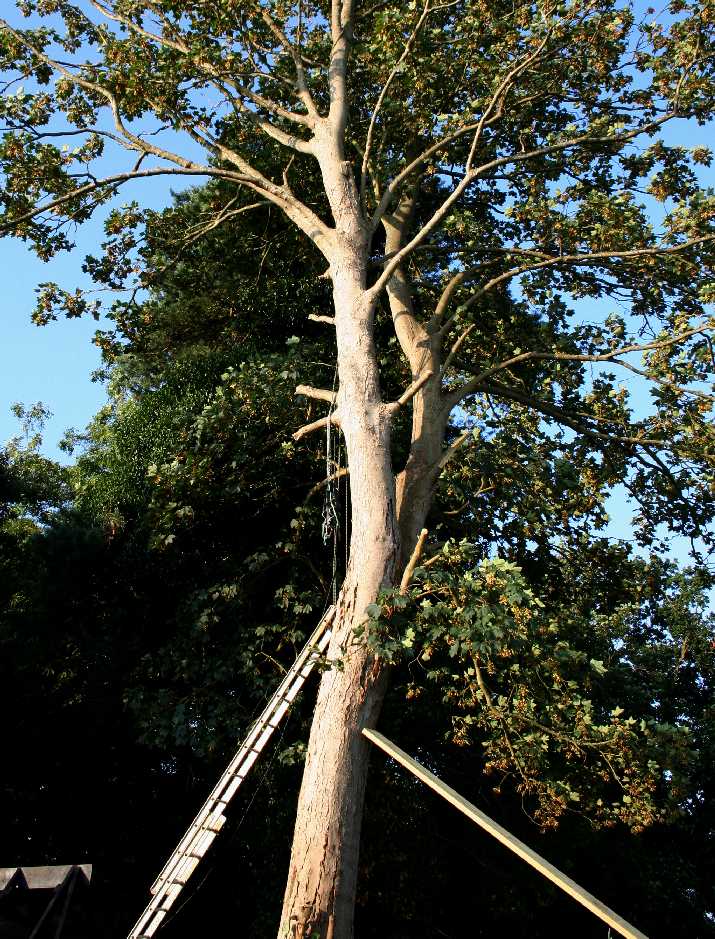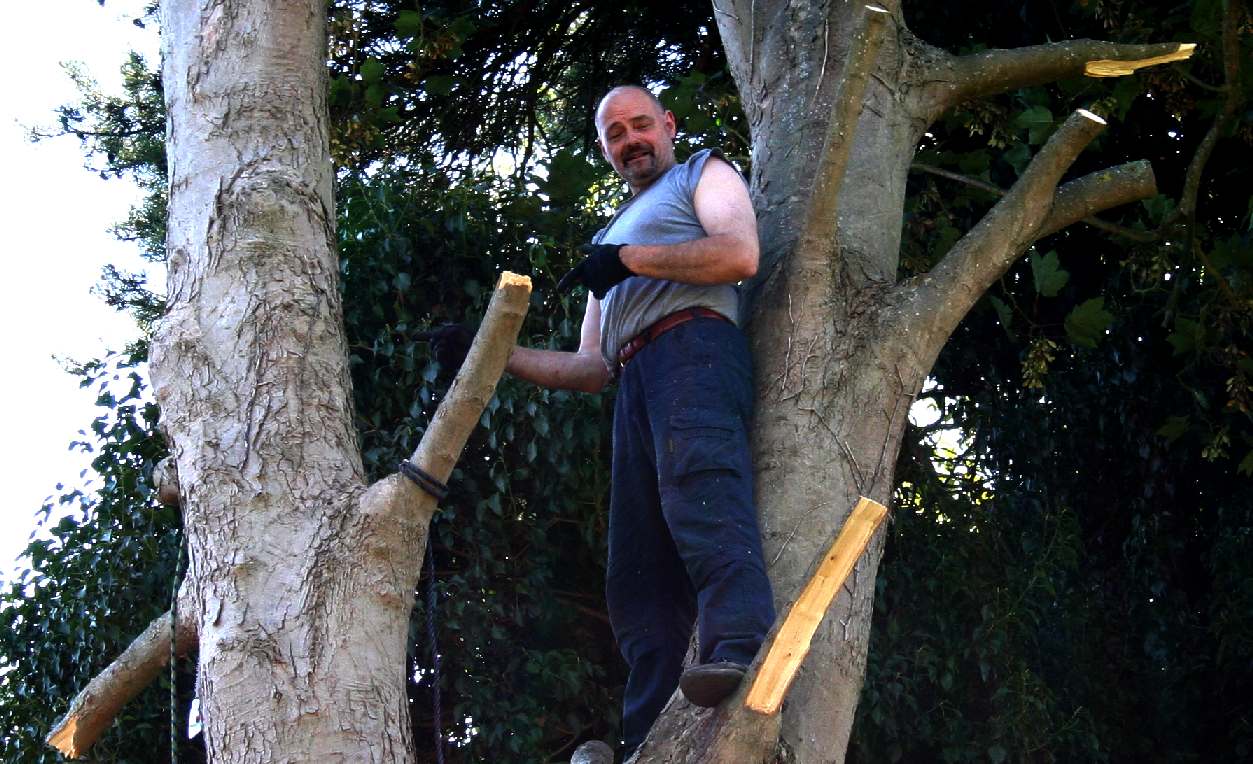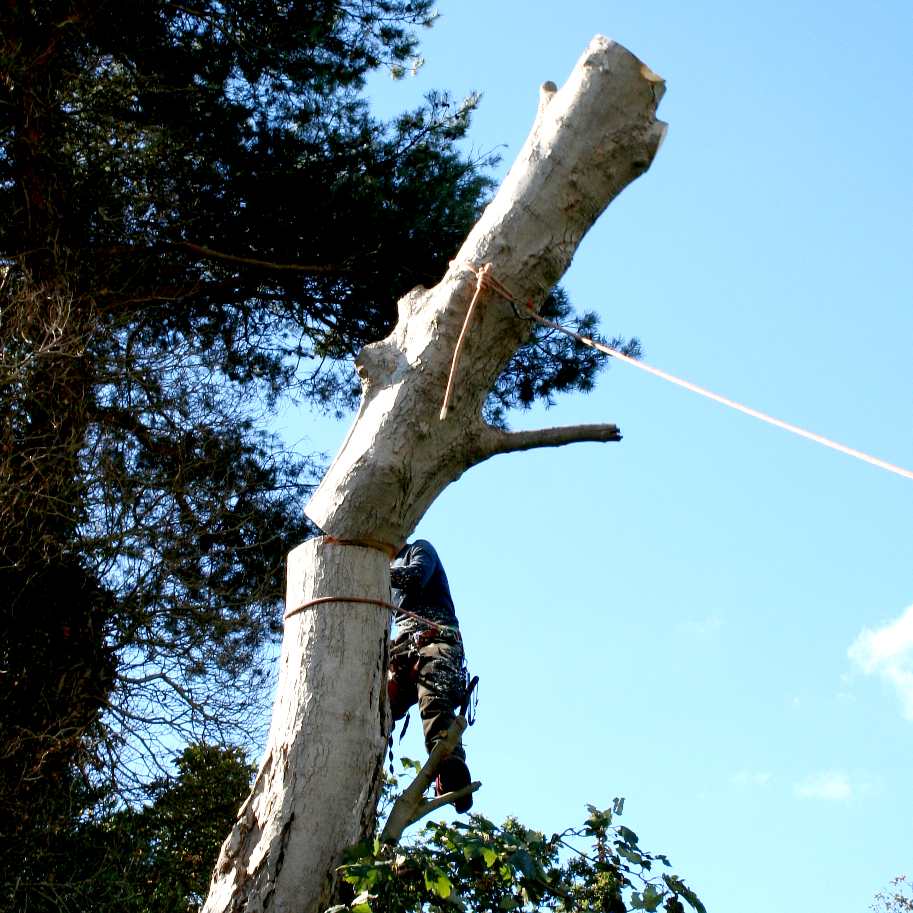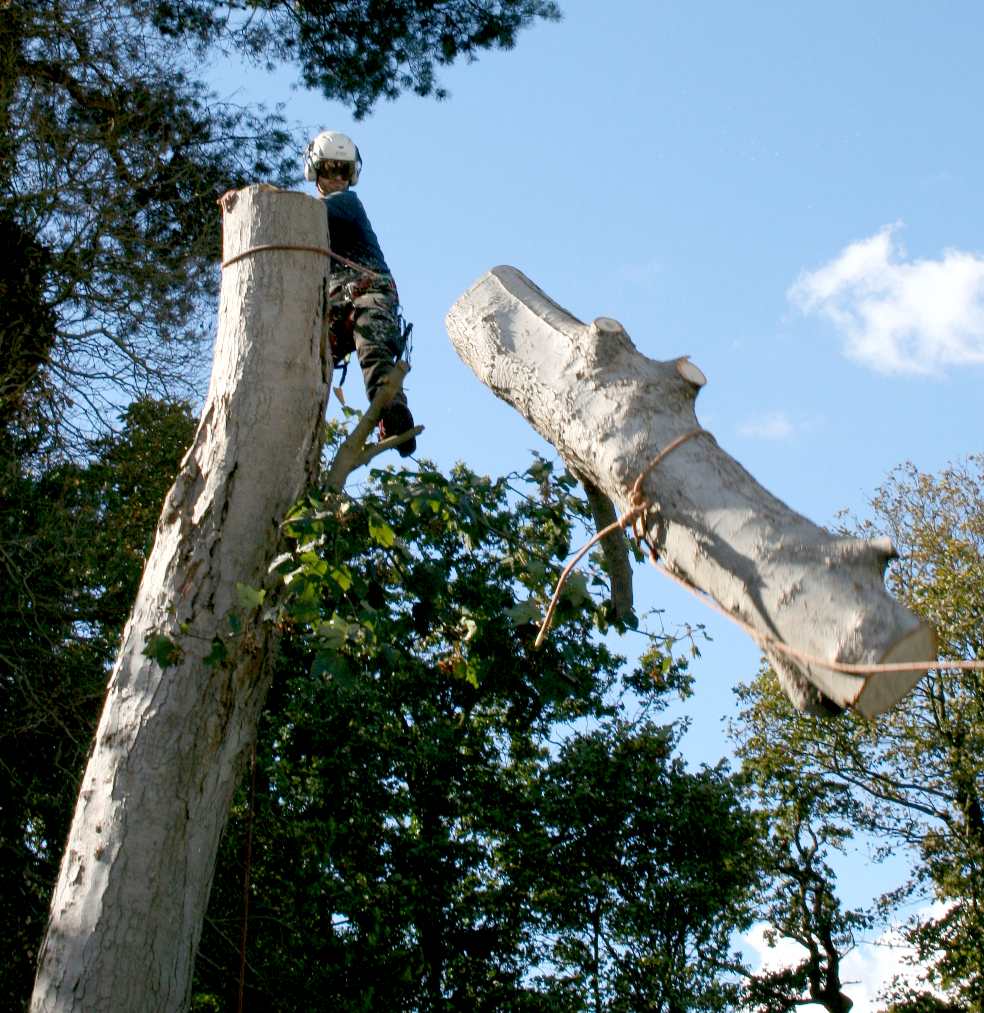|
NELSON KAY - LEADS THE WAY
|
|
|
It appears from the current shortage of affordable housing that there are few people who genuinely have the ability to look at a problem and suggest viable solutions for the looming problems ahead.
Nelson Kay is a progressive thought leader when it comes to sustainable housing that is cheap and genuinely affordable for those entering the housing market. He well remembers when he was a young man looking to buy a home of his own, while he was caught up in the renting cycle. He managed to escape that rut, but appreciates that without the necessary expertise, millions of new families will become financial slaves for the rest of their lives, working to keep fat-cat property developers in the lap of luxury while they toil 9-5 to buy the mansions and Bentley cars that do not sit well with the sustainable ethics of the United Nations.
2007 - Finally dispatched, the Holm oak trunk first removed from the TPO in 1984 fell over in relatively high winds in the early hours of one morning. As you can see it narrowly missed a parked Jeep, but managed to bend the hinges of the gates that were open at the time.
There is also a skills shortage, with students leaving further education without the experience to be able to build their way out of the rat race that our politicians need to keep raking in the taxes that if they were spent wisely, we might not be in the situation we are today.
He blames the likes of Margaret Thatcher for allowing councils to sell off their housing stocks, while not encouraging them to replace that low cost housing with more of the same. Then there are the housing ministers that allow councils to grant consents for houses that nobody locally can afford, pretending that they represent lower rents, but forgetting that flat pack timber homes cost a fraction of brick builds.
Another issue that is eluding councils is climate change, even though we have the Climate Change Act 2008 and all that entails, councillors are led like sheep to ignoring that responsibility, while their planning officers pursue their agendas that bear no relation to reducing poverty as per SDG1.
As you can see from the pictures on this page, Nelson is a practical man, more than capable of felling a few rogue trees and building a home with his bare hands, and maybe a few power tools. Nelson wants more youngsters to have these skills and to pass them on. Hence, education as per SDG4 is a priority as far as he is concerned. You've probably guessed that when he was young, Robinson Crusoe was his hero.
THE 18th HOLE - This sycamore had two trunks, fortunately, both leaning slightly away from the historic building. The method of removal in such cases is to fell the trunk ahead of the other first of all. Otherwise the trunk behind may snag of the one in front, and rotate, falling to one side. In this case we wanted the trunks to fall away from the building over a hedge. Don't worry about the hedge, it will soon grow back.
That's both trunks safely down. Note they have been cut fairly high up the trunk, that will mean quite a bit more cutting later. This was a safety tactic, also reducing the damage to the hedge. You can see from this picture just how big this tree was.
The bow saw seen here was not used in the felling. Our hero is fit, but there are limits. A chain saw was purchased from B&Q for less that £100 - made in China. The cost of employing a tree surgeon would have been a lot more than that. Please do not have a go yourself unless you have at least completed a competence safety course. The curator has many years experience as a DIY lumberjack.
In a bullish mood. The natural woodsman they tried to bury with costs and more, stands like a modern day Tarzan, on one of the felled sycamore trunks. There is just one more very large sycamore to go, and then it's downhill all the way with site tidying and landscaping. With these two trees down, the annual maintenance cost will drop considerably. Also, the Trust may now safely install the glass for the solar conservatory. They had been holding fire - just in case. Did we say downhill all the way, what about that rusty makeshift roof? Uphill it is then. That will wipe the smile from the curator's face.
The moral of this story is that: "if you know you are right - then stand up and fight." Winston Churchill would most probably have said and done the same as our curator. Never give in to a Hun dictator.
LINKS & REFERENCE
http://
FINALLY - Then there was one. This sycamore had been deemed to be dangerous, so dangerous that a local expert suggested that it would be advisable to use a Mobile Elevated Work Platform (MEWP) when reducing the height. On further examination by our curator (also an engineer) it was found that the tree amply supported a person working in the branches above, though in this case ropes were used just in case.
The main concern with this tree is saving it, if that is at all possible. Our curator thought to give it a go, by bracing the trunk with a wooden plank (later to be replaced by steel sections). He also wondered if it might be possible to effect a bark graft where there is a notch only a few feet from the ground cut into decayed wood at the base of the trunk by way of an exploratory? Though this is only an idea. But, if the Trust are going to spend money on this tree they will have to do something with it. The first item on the agenda is to reduce the height of the tree and so the tonnage of the leafy canopy, in so doing allowing more latitude when considering how best to justify keeping the tree.
SYCAMORE & SCOTS PINES - The last tree but one in the original preservation order is this sycamore, it was removed from the order a few years ago. It is a particularly difficult tree to climb because it has no branches lower down. For this reason a ladder was used to get to the 'V' from where it was easier going. An alternative approach would be to sling a rope through the vee. When dealing with a tree this tall, do not work alone and wear some grippy shoes - and gloves if you have them.
Adjacent
to the sycamore it is a scots pine that is not protected and that has
seen better days and is now dropping dead branches regularly as it
climbs higher and higher. The scots pine is the national tree of Scotland. Mature trees grow to 35m and can live for up to 700 years. The bark is a scaly orange-brown, which develops plates and fissures with age.
APEMAN - There is nothing quite like being at the top of a tree. The view is spectacular, as expressed in Medicine Man. Our curator loped the top branches of this tree using a bow saw, in the process climbing right to the top of what is a very tall sycamore. In these pictures he reveals his love of life in the branches and his tan lines.
Sycamores can grow to 35 meters ( 114 feet) and live for 400 years, they were imported from Europe but are now considered to be native. Their timber is hard and strong, pale cream and with a fine grain. It is used for making furniture and kitchenware as the wood does not taint or stain the food. Trees are planted in parks and large gardens for ornamental purposes. Mature trees are extremely tolerant of wind, so are often planted in coastal and exposed areas, as a wind break. They are also tolerant of pollution and are therefore planted in towns and cities.
Sycamores are attractive to aphids and therefore a variety of their predators, such as ladybirds, hoverflies and birds. The leaves are eaten by caterpillars of a number of moths, including the sycamore moth, plumed prominent and maple prominent. The flowers provide a good source of pollen and nectar to bees and other insects, and the seeds are eaten by birds and small mammals.
TRUNK REDUCTION - Finally we are down to the main trunk of this enormous tree. Where there was a possibility of this hefty section falling the wrong way, a rope was used and a person on the ground helped the lumberjack to persuade the tree trunk to fall the right way. The remaining trunk will be shored up and serve as a mounting for either a wind turbine, solar or other equipment to ensure a sustainable future for Herstmonceux Museum. Copyright © Lime Park Heritage Trust 11 October 2016. You will need the permission of the LPHT to reproduce these photographs except for private study or research.
HERITAGE INDEX A - Z
BARCLAYS BANKING LET DOWN - MISSING ACCOUNT MONEY CAMPBELL HALL - BLUEBIRD ELECTRIC CARS GAS ENGINES - COAL CONVERSION, INTERNAL COMBUSTION OBSERVATORY - HERSTMONCEUX CASTLE SOLAR LADY - STATUE
|
|
|
This website is Copyright © 2018. All rights reserved. All other trademarks are hereby acknowledged. Contact Us www.cherrymortgages.com
|
